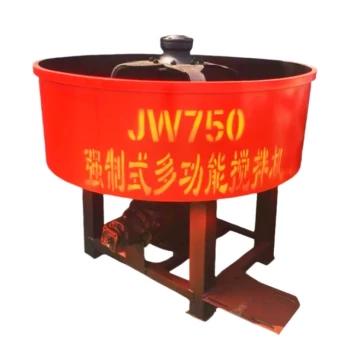Introduction
Choosing the right lubricant for electric hoists isn't just about preventing wear—it's about balancing protection with energy efficiency. This guide breaks down the science of speed-dependent lubrication, helping operators extend equipment lifespan while maintaining peak performance. Backed by tribological principles and real-world data, we'll simplify complex viscosity decisions into actionable strategies.
Lubrication Fundamentals in Deceleration Mechanisms
The Role of Viscosity in Load-Bearing Film Formation
Lubricants create a protective film between moving parts. The thickness of this film depends on viscosity—the fluid's resistance to flow.
- Low-speed hoists: Require higher viscosity oils to maintain film strength under heavy loads. Thin films risk metal-to-metal contact (boundary lubrication), accelerating wear.
- High-speed hoists: Need lower viscosity oils to reduce viscous drag, which can sap up to 15% of operational energy.
Ever wondered why some hoists overheat despite proper lubrication? The answer often lies in mismatched viscosity.
Penetration Properties and Frictional Heat Dissipation
Grease penetration (measured in tenths of a millimeter) determines how well it fills gaps:
| Surface Condition | Lubricant Type |
|---|---|
| Rough surfaces | High-viscosity grease (low penetration) |
| Precision gears | Low-viscosity oil |
Heat dissipation becomes critical at speeds above 30 RPM. Synthetic oils outperform mineral-based variants here, with 20% better thermal stability.
Speed-Specific Lubrication Strategies
Low-Speed Operation: Preventing Boundary Lubrication Failure
For hoists operating below 10 RPM (common in heavy lifting):
- Use ISO VG 220-320 oils or NLGI Grade 2 grease
- Prioritize additives like anti-wear (AW) or extreme pressure (EP)
- Monitor for "stick-slip" motion—a telltale sign of inadequate film strength
Case Example: A construction site using Garlway winches reduced bearing replacements by 40% after switching to high-viscosity grease for low-speed concrete lifts.
High-Speed Scenarios: Minimizing Viscous Drag Energy Loss
Hoists exceeding 60 RPM (e.g., material handling in warehouses) demand:
- ISO VG 32-68 oils with high viscosity index (VI > 120)
- Polyurea-thickened greases for reduced churning losses
- Regular oil analysis to detect viscosity breakdown
Pro Tip: In cold environments, low-temperature synthetics prevent startup drag—critical for winter construction projects.
Implementation Guidelines
Temperature-Viscosity Index Cross-Reference Tables
Match lubricants to ambient conditions:
| Temperature Range | Recommended Viscosity Index |
|---|---|
| -20°C to 40°C | VI 90-110 (mineral oils) |
| Below -20°C | VI 130+ (synthetics) |
Maintenance Protocols for Different Usage Intensity Levels
Moderate Use (8 hrs/day)
- Oil change every 500 operating hours
- Grease replenishment every 3 months
Heavy Use (24/7 operations)
- Weekly oil sampling
- Automatic lubrication systems preferred
Conclusion & Actionable Steps
- Audit your hoist's speed profile: Time 10 full cycles to calculate RPM.
- Inspect surfaces: Rough gears need thicker lubricants than polished ones.
- Start with manufacturer specs: Garlway’s winch manuals provide baseline viscosity recommendations.
Final Thought: Like blood in veins, the right lubricant keeps machinery "alive" longer. By aligning viscosity with operational speed, you're not just maintaining equipment—you're engineering reliability.
Next Steps: For hoists in extreme conditions, consider consulting tribology specialists to customize lubrication plans.
Related Products
- Electric Hoist Winch Boat Anchor Windlass for Marine Applications
- Heavy Duty Electric Boat Winch Windlass Anchor
- Electric and Hydraulic Winch for Heavy Duty Applications
- Commercial Electric Concrete Mixer Machine HZS 50 Small Batch Plant for Sale
- JDY350 Electric Hydraulic Mortar Mud Concrete Mixer
Related Articles
- How Hoists Transform Disaster Response: Technical Insights and Real-World Applications
- How Anchor Winch Technology Transforms Fishing Efficiency Through Smart Relocation
- How Proper Lubrication Checks Prevent Electric Hoist Failures and Boost Efficiency
- Why Boat Anchor Winches Earn "Best Accessory" Status: A Deep Dive into User Satisfaction Drivers
- How Boat Anchor Winches Prevent Injuries and Enhance Marine Safety














